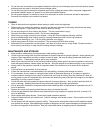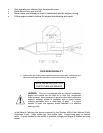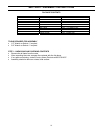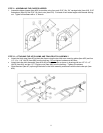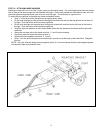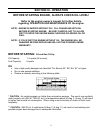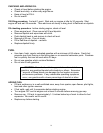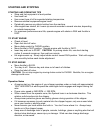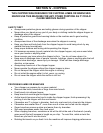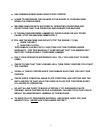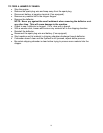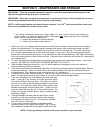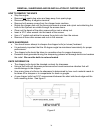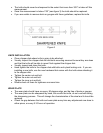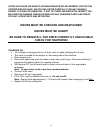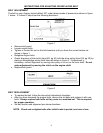
SECTION IV - CHIPPING
THIS CHIPPER WAS DESIGNED FOR CHIPPING LIMBS OR BRANCHES.
NEVER USE THIS MACHINE FOR ANY OTHER PURPOSE AS IT COULD
CAUSE SERIOUS INJURY.
SAFETY FIRST
• Always wear protective gloves and safety glasses during operation of the chipper.
• Never allow your hands or any part of your body or clothing inside the chipper hopper or
discharge area of the chipper.
• Keep all protective guards and warning labels on the machine and in good working
condition.
• Always stand clear of the discharge area when the chipper is running.
• Keep your face and body back from the chipper hopper to avoid being struck by any
material that may bounce back.
• Keep proper balance and footing while operating the chipper.
• If it becomes necessary to push material into the chipper hopper, only use a wood stick,
never your hands or anything steel.
• Never assume you know where the chipper knife is. You do not know where it is.
• Keep area of discharge clear of people, animals, buildings, glass or anything else that will
obstruct clear discharge, cause injury or damage. Wind can also change discharge
direction, so be aware.
• Always keep hands out of the chipper hopper.
• Never operate the chipper without the chipper hopper in place.
• Do not transport the chipper while the engine is running.
• Do not refuel the engine while it is hot, warm, or running.
• Do not cover the chipper while the muffler is still hot.
PROCESSING LIMBS OR BRANCHES
• Your chipper can process dry or green material.
• Remove side limbs, branches or twigs from main branch.
• Feed branch into chipper hopper.
• Keep branch at same angle as chipper hopper.
• As the branch becomes short and is inside the chipper hopper, finish processing it by
pushing it into the chipper with the next branch.
• If branches are 2” or larger in diameter, feed only one branch at a time into the chipper.
• If branches are smaller than 2”, more than one at a time can be fed into the chipper.
• Green branches process quicker and easier than dry branches.
• Soft wood processes easier than hard wood.
• When chipping branches, sometimes a tail will be left at the end of the branch (usually
green wood) that will increase in length as you chip. To avoid this, rotate or twist the
branch as you feed it into the chute.
• Rotating the branch as you feed it into the machine will improve chipping performance.
16



